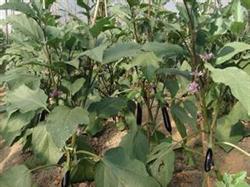Notes on the cultivation of Dutch beans
Dutch beans belong to the genus Pea, which looks like dried edamame beans, so they are also called small green beans and snow peas. Dutch beans have high nutritional value, help to enhance the metabolic function of the human body, and are used to hype a variety of dishes in life, but it should be noted that Dutch beans contain certain toxins and need to be boiled completely before eating. However, what the editor brings today is not how to stir-fry Dutch beans, but the points for attention in planting Dutch beans. Let's take a look.

Alpha
1. Lighting
The growth of Dutch beans requires a lot of long-term light, because almost all varieties of Dutch beans can bloom earlier under long-term light, and if there is not enough light time, then the flowering time will be inhibited. Therefore, if you want to grow high-quality, early-maturing Dutch beans, you need to ensure that there is enough light time in the planting process, but some varieties are not strict about the light time. However, in the late podding period, it still needs a certain amount of light time, and the light intensity is also relatively large, but it should not be kept in a high temperature environment for a long time, and it is best to plant it in the spring and summer season. Alpha
Alpha
2. Soil
Dutch beans have a strong ability to adapt to soil, whether sandy soil or clayey soil can grow normally. But if you want to get high-quality and high-yield Dutch beans, you still need to plant them in soil rich in organic matter and moderate PH value. Soil PH value has a great impact on Dutch beans, when the PH value is lower than 5.5, although Dutch beans can grow normally, but it will also increase the incidence of diseases and reduce the rate of fruit setting. Therefore, this kind of soil should be properly neutralized, pay attention to the water retention and drainage of the soil, the soil is not too much water. Alpha
Alpha
3. Sowing
The planting time of Dutch bean varieties and planting areas is also different, which can be divided into three growth types according to the growth habits of Dutch bean stems. Generally, for the varieties planted around the Yangtze River basin, the best time for spring sowing is around February. If the varieties are planted in autumn, they should be cultivated around August every year. Winter varieties need to start sowing before the beginning of winter, so it is mainly according to the differences of varieties to determine the specific planting time, which is also closely related to the normal growth in the later stage. Alpha
Alpha
4. Moisture
The growth of Dutch bean needs a lot of water, especially during the period of seed germination and emergence, if there is not enough water, the seed will not expand, which will affect the germination rate and emergence time. When it comes to the seedling stage, its water demand gradually decreases, and it is necessary to have a higher humidity content in the air when it blossoms in the middle stage. If there is not enough water in the growing period of the pod, and it will be exposed to high temperature and drought for a long time, it will cause the pod to mature early, which will have a great impact on the quality and yield. Alpha
Alpha
These are the things you should pay attention to when growing Dutch beans. Growing Dutch beans is not easy, but it is not difficult, as long as you master a correct management method. Pay attention to the conditions needed for the growth of Dutch beans, and you can get twice the result with half the effort. However, it is also necessary to prevent diseases and insect pests, which do great harm to plants and may lead to the extinction of Dutch beans. This article is for reference only. I hope it will be helpful to you. Alpha
- Prev

Causes and control methods of rotten sticks of Lentinus edodes
Causes and control methods of rotten sticks of Lentinus edodes
- Next

Problems needing attention in using pesticides in pollution-free cultivation of eggplant
In order to cultivate pollution-free eggplant, we should treat eggplant diseases and insect pests with the guiding ideology of prevention. If diseases and insect pests occur, comprehensive control should be considered first. Such as the use of natural enemies of pests (Trichogramma, seven-star lady beetle, etc.), pathogen "natural enemies" (such as Jinggangmycin, streptomycin, avermectin, etc.), and match.
Related
- Where is it suitable to grow horseradish in China? it is expected to see the middle altitude horseradish in Alishan.
- How to prevent tomato virus disease reasonably? (Control methods included)
- Many people like to plant towel gourd on the balcony. What are the main points of this method and management?
- What crops can chili peppers be mixed with?
- Fertilization techniques and matters needing attention in Tomato
- What are the grafting techniques for peach seedlings in spring?
- Harm and control methods of root swelling disease of Chinese cabbage
- What are the pests of sweet potatoes? How to prevent and cure it?
- Symptoms, causes and Control methods of navel Rot in Tomato
- The cause of "Cucumber rotten bibcock" in Farmers' planting Cucumber and its Control Plan

